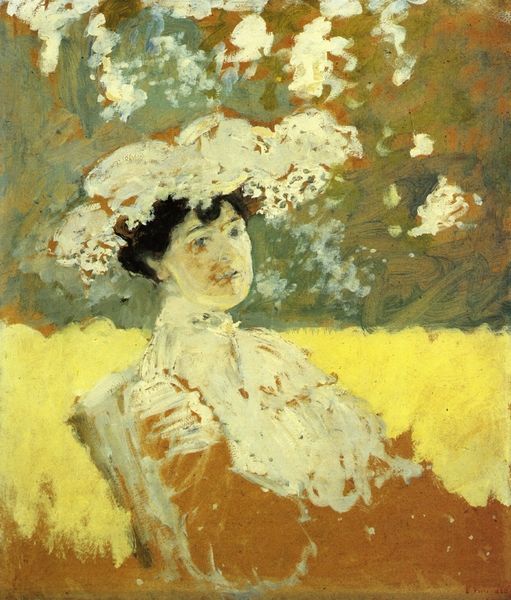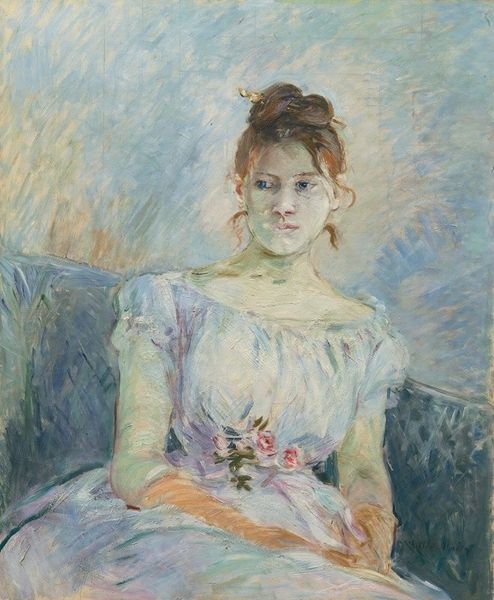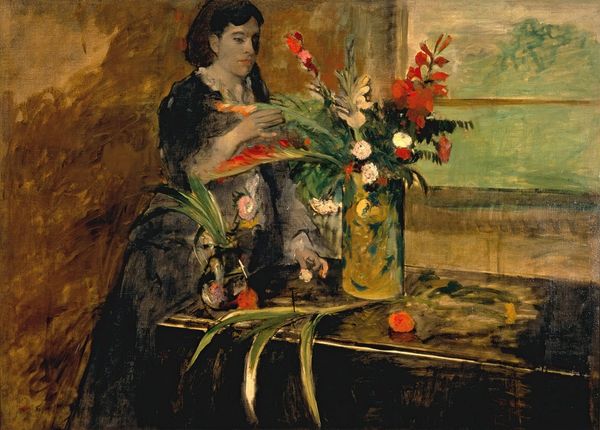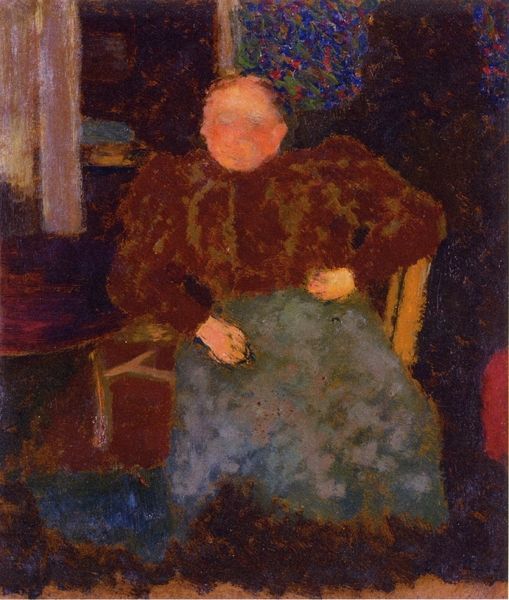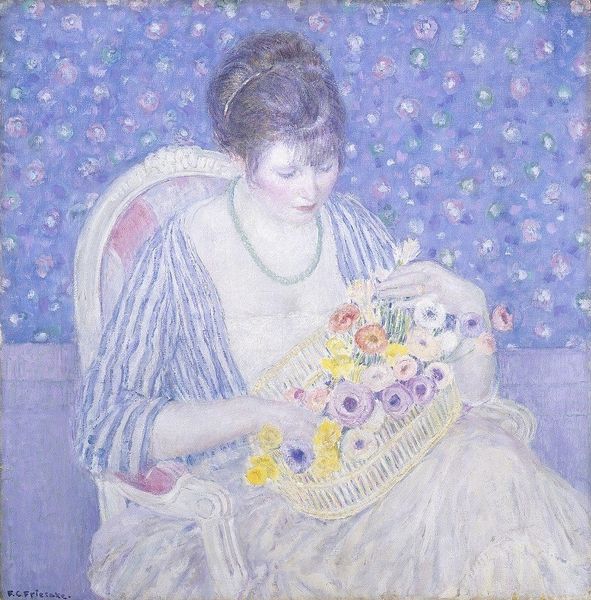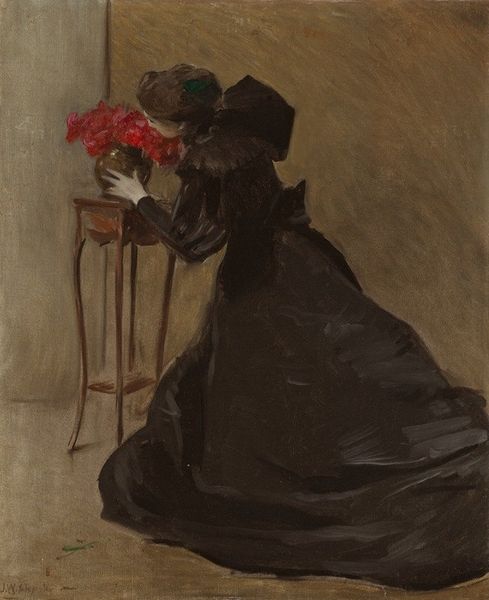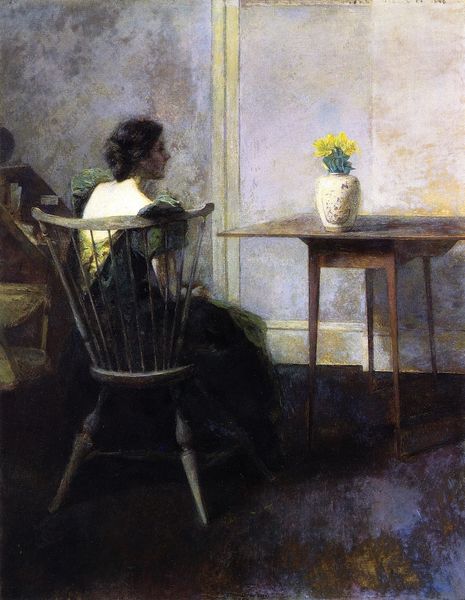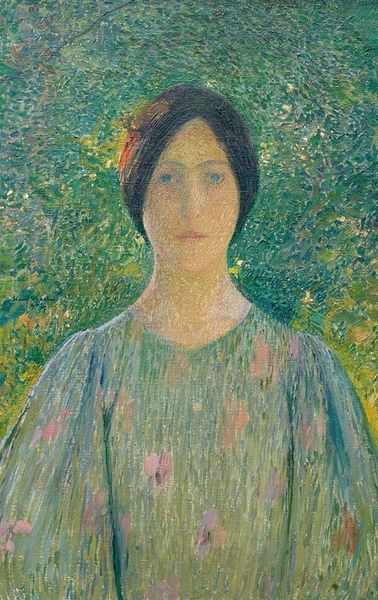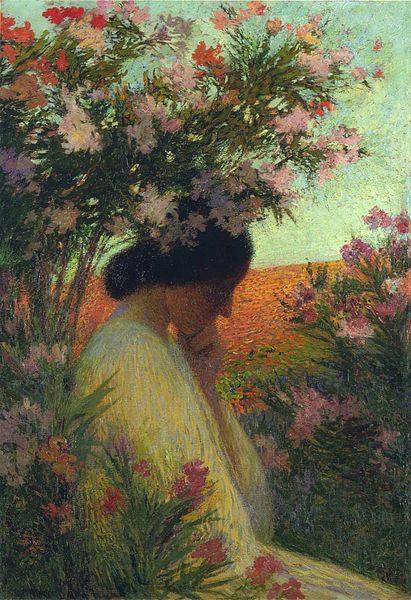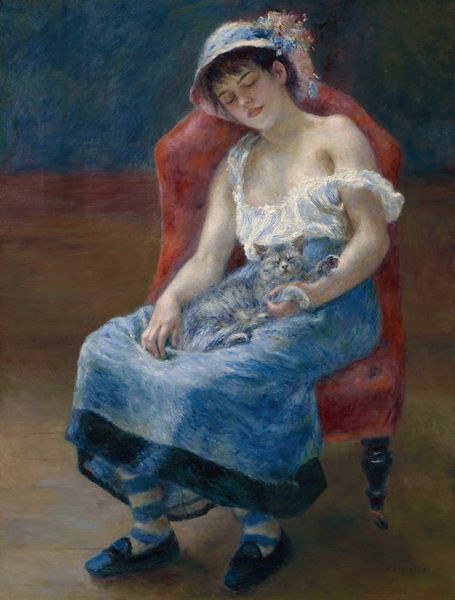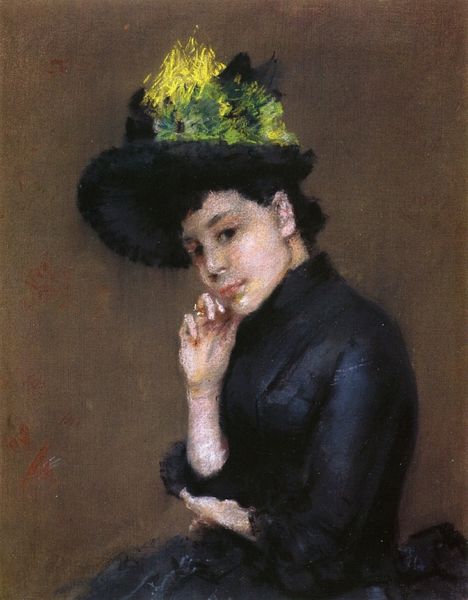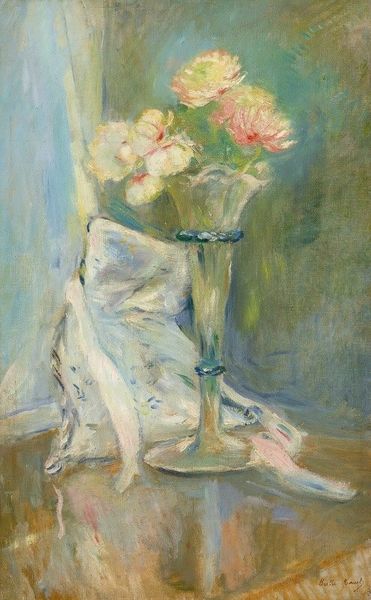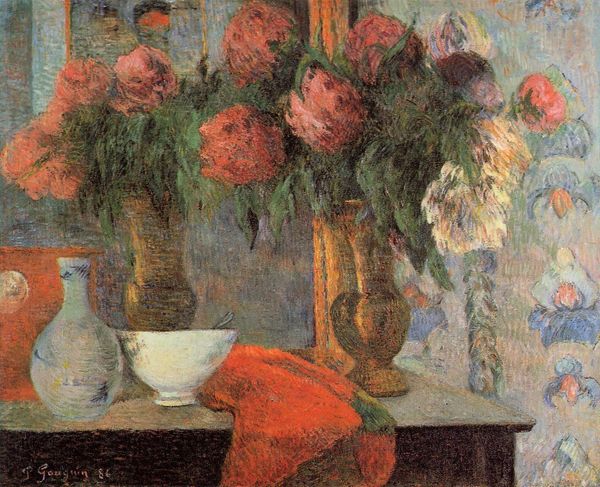
painting, oil-paint
#
portrait
#
painting
#
impressionism
#
oil-paint
#
landscape
#
flower
#
oil painting
#
intimism
#
post-impressionism
#
fine art portrait
Copyright: Public domain
Editor: This is Claude Monet's "Portrait of Suzanne Hoschede with Sunflowers" from 1890. The textures are so soft and dreamlike. What do you make of the sunflowers and their placement above the figure’s head? Curator: The sunflowers operate on multiple levels, evoking layered symbolism. Most immediately, they're about warmth, adoration, even longevity, given their association with the sun and cycles of nature. They can indicate devotion, perhaps. Monet painted numerous sunflower studies and still-lifes, so here, what is the relationship? Is Suzanne crowned by nature? Does it reflect her own sunny disposition or Monet's feelings for her? Editor: So, are they more than just decoration? I see she’s resting her face on her hand, appearing thoughtful. Curator: Indeed. Consider also how sunflowers became a loaded image, strongly linked to Van Gogh, his contemporary. Perhaps Monet references that iconic, somewhat tormented imagery but recasts it. Instead of conveying angst, Suzanne and the sunflowers offer calm. Notice how her blue-violet dress complements the vibrant yellows, creating visual harmony and, I'd argue, psychological ease. Editor: I hadn't thought about the Van Gogh connection at all. The symbolism of the colors, and the subtle psychological interplay you describe… it gives the painting so much more depth! Curator: It reveals that interplay of inner life, nature, and memory itself, wouldn’t you agree? It encourages further questions about beauty, meaning, and their ever-changing manifestations. Editor: Definitely! I’ll never look at a sunflower the same way again.
Comments
No comments
Be the first to comment and join the conversation on the ultimate creative platform.
